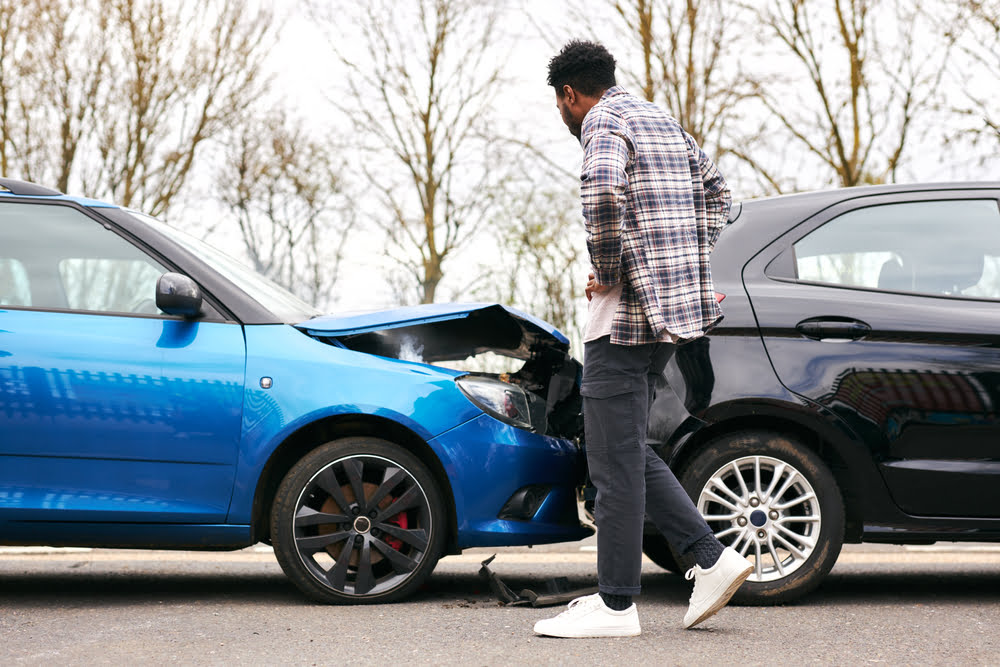There are several kinds of car accidents that may lead to liability cases and eventual compensation, and one of the most common is the rear-end accident. Who is at fault in a rear end collision? While there’s a common answer that most people are familiar with, there are also a few additional factors to be aware of here.
At the offices of William Rawlings & Associates, we’re proud to offer the very best car accident attorney services you’ll find around Salt Lake City, Draper, Provo and nearby parts of Utah, with auto accident lawyers who boast decades of combined experience in helping clients obtain their just compensation. We handle many rear-end accidents and have a firm grasp on how negligence, fault and damages are typically determined in these cases. Here are some basics on who is at fault in rear-end collisions, some elements that can impact this answer, and more.

Back Driver More Commonly at Fault
Many of our readers are already likely familiar with the general trend that the back driver in a rear-end accident is often the one who’s at fault. This is due to basic driving principles – it’s each driver’s responsibility to maintain a safe distance from those in front of them, and not doing so can lead to an accident that’s their fault.
However, it’s important to realize that this is not a hard-and-fast rule. There are certainly situations where the front driver may be at fault. We’ll dig further into this in our next section.
Proving Negligent Conduct
When it comes to the practical results of proving fault in a rear-end collision – that is, obtaining compensation from the other driver’s insurance company – one of the most important elements will be proving negligent conduct. Whether you’re a back driver or a front driver, if you can prove that the other party was acting recklessly, carelessly or otherwise negligently, such as by texting while driving or tailgating, this may help show that they were at fault for the accident.
There are several forms of basic driving duty that either driver in a rear-end collision may breach, which could be considered negligence:
- Distraction: Distracted driving is one of the leading causes of rear-end collisions, and it’s always on the rise with today’s smartphone age. Drivers who are texting, eating or even just changing a radio station may be considered negligent if they cause an accident while doing so.
- Speeding: In some cases, a back driver may claim that they didn’t have time to stop because the front driver was going too fast. But in most cases, this won’t hold up – it’s a basic principle that drivers should be able to stop within a reasonable distance under any conditions.
- Tailgating: Following too closely is also considered negligent driving, as it leaves no room to react if the car in front suddenly stops or slows down.
Front Driver Fault Factors
While they may be less common, there are also certain situations where the front driver may be at fault in a rear-end accident. For instance, if the front driver suddenly reverses or makes an unexpected U-turn without signaling and causes a collision, they may be found partially responsible for the accident.
Additionally, if there was a mechanical issue with the front car, such as a brake light being out or malfunctioning, this could also impact the fault determination. The front driver has a responsibility to keep their car in proper working condition and may be considered at fault if they fail to do so.
Possible Forms of Damages
There can be a few different forms of damages or compensation that may be available in a rear-end collision case, depending on the specifics of the situation. These include:
- Medical expenses: This includes costs for hospital visits, surgeries, medication, physical therapy and any other related expenses.
- Vehicle repairs: Damages to your car can also be claimed if you’re not at fault in a rear-end collision.
- Lost wages: If you’ve had to miss work due to the accident, you may be able to claim lost income.
- Pain and suffering: This type of damage refers to the physical and emotional toll that the accident has taken on your life, such as pain from injuries or trauma.
How a Car Accident Attorney Will Help
If you’ve been involved in a rear-end accident and are seeking compensation, it’s important to consult with a qualified car accident attorney who can help guide you through the claims process. They will thoroughly investigate the accident, gather evidence to prove negligence on the part of the other driver, and negotiate with insurance companies to ensure you receive fair compensation for any damages or injuries sustained.
At William Rawlings & Associates, our experienced car accident attorneys have a deep understanding of the laws surrounding rear-end collisions and will work diligently to protect your rights and obtain the justice you deserve. Contact us today for a free consultation and let us help you get back on the road to recovery, whether you’re in SLC, Provo, Draper or any nearby area.